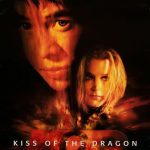The Mist (2007)

“The Mist” (2007): A Chilling Exploration of Humanity’s Darkest Impulses
In 2007, director Frank Darabont delivered a haunting and thought-provoking adaptation of Stephen King’s novella “The Mist,” creating a cinematic experience that has left an indelible mark on the horror genre. Blending elements of psychological suspense, supernatural terror, and social commentary, “The Mist” is a masterful exploration of the human condition in the face of overwhelming adversity.

The film’s narrative follows a group of small-town residents who become trapped in a local grocery store after a mysterious, impenetrable mist descends upon their community. As the characters grapple with the unseen horrors lurking within the mist, they are also forced to confront the darker aspects of their own nature, as fear, paranoia, and religious fanaticism threaten to tear the group apart.

Darabont’s direction is a masterclass in building tension and atmosphere, as he masterfully crafts a sense of claustrophobic dread that permeates every frame of the film. The use of practical effects and minimal CGI in the depiction of the mist’s inhabitants lends a tangible, unsettling quality to the supernatural elements, making the audience feel as if they are trapped within the confines of the grocery store alongside the characters.

The film’s ensemble cast, led by the powerhouse performance of Thomas Jane as the tormented protagonist David Drayton, delivers a series of nuanced and deeply compelling portrayals. Each character represents a different facet of human nature, from the pragmatic to the paranoid, and their interactions and conflicts drive the film’s exploration of the fragility of civilization in the face of crisis.

One of the most striking aspects of “The Mist” is its willingness to confront the darker impulses of humanity. Darabont’s script does not shy away from the ugliness that can arise when individuals are pushed to the brink of desperation, and the film’s climactic moments are both harrowing and devastatingly tragic.

The director’s mastery of pacing and visual storytelling is on full display, as he meticulously crafts a sense of dread and unease that builds to a shattering conclusion. The film’s final moments, in particular, have become the subject of much debate and analysis, as Darabont’s bold and uncompromising creative vision challenges the audience to confront the harsh realities of human nature.
“The Mist” is a cinematic experience that lingers long after the credits have rolled. It is a haunting and deeply unsettling exploration of the fragility of the human spirit, the corrosive power of fear and intolerance, and the thin line that separates civilization from barbarism. Darabont’s masterful direction, combined with the ensemble’s powerful performances and the film’s harrowing narrative, have cemented “The Mist” as a modern horror classic – a testament to the transformative power of the cinematic medium.
In a world that continues to grapple with the complexities of the human experience, “The Mist” serves as a stark and uncompromising reminder of the importance of empathy, compassion, and the strength of the human spirit to overcome even the most daunting of challenges. Darabont’s film is a cinematic masterpiece that will continue to captivate and disturb audiences for generations to come.











